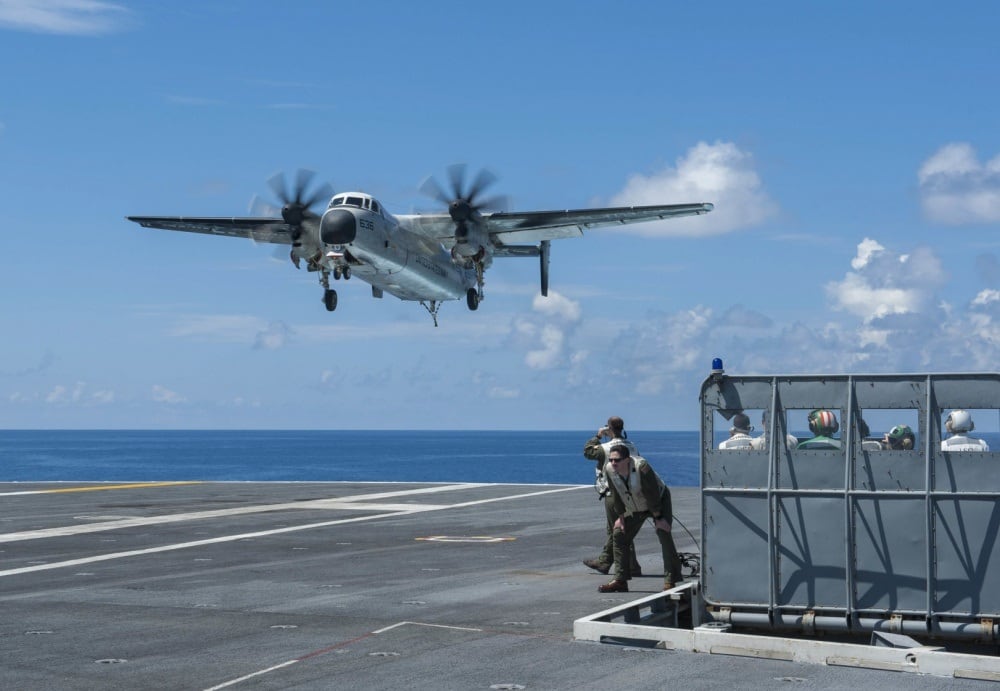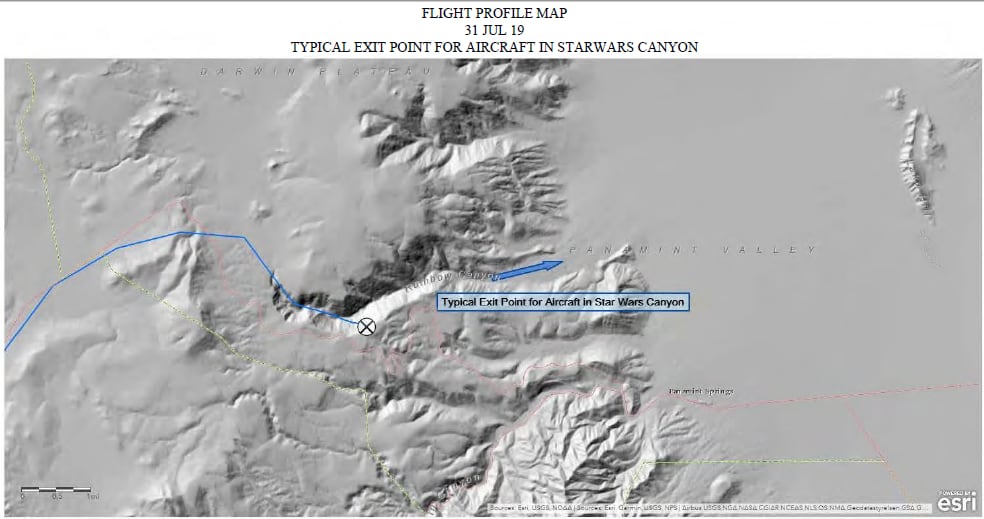A U.S. Navy F/A-18E Super Hornet was flying “too fast and too low with respect to the surrounding terrain” before it struck the wall of Star Wars canyon in California’s Death Valley National Park last summer, according to an internal investigation obtained by Navy Times.
The July 31 crash took the life of Lt. Cmdr. Charles Z. Walker, 33, a pilot with Strike Fighter Squadron 151.
Walker was a lieutenant at the time and was posthumously promoted.
“The flight profile created conditions where the processing time and subsequent reaction time required of the pilot made it difficult for the aircraft to exit the canyon safely,” the report states.
“The findings of this investigation should be widely shared as an example of the unforgiving nature of naval aviation and the fact that a brief lapse in judgement can produce catastrophic results.”
A command investigation into the mishap also reveals that seven French citizens were about 40 feet above where the jet crashed and suffered varying levels of burns requiring hospitalization.
RELATED

“All survived and have, and/or are expected to, make full recoveries,” the investigator wrote in September.
Walker and his wingman took off that morning from nearby Naval Air Station Lemoore and flew to a training space above the park in the Mojave Desert and toward the mouth of Star Wars canyon.
The investigator wrote that Walker was not current in low altitude training because he had not flown a minimum of 10 minutes in a low altitude environment in the past 30 days, so he was instructed to keep his jet at least 500 feet above ground level during that day’s training.
No evidence emerged that Walker was “flat-hatting” or flying at a low altitude for thrills, according to the report.
“LT Walker was considered to be the most proficient (low altitude training) pilot in the squadron,” the report states.
His chain of command reported that “the ‘low level’ flight was likely a favorite mission of LT Walker and that he was very thorough in his preparation.”
Walker entered the canyon from the west, descending through 4,000 feet and going roughly 630 mph “in full afterburner,” the report states.
His wingman didn’t see the crash.
“The wingman was in a hard right-hand pull at the time of impact and reversed left to roll wings level when he saw a huge ball of fire extending up in a column of fire and smoke” at about 9:43 a.m., the investigator wrote.
Seven French tourists were taking photographs near the Father Crowley Overlook on the south wall of Star Wars canyon when Walker crashed, according to the report.
Their names are redacted but the victims included a 57-year-old man, a 56-year-old women and five other men and women in their 20s.
“Upon impact, the French tourists began to run away from the explosion, but were unable to avoid the blast,” the investigator wrote. “All were treated for burn injuries of varying degrees.”
“I saw the fire and the debris fly toward us,” one of the tourists said via a translator. “We were all burned severely. We were very scared, but we are all alive.”

The National Parks Service page for the Death Valley National Park notes that visitors may “not see or hear an aircraft approaching until it is directly overhead or nearby.”
“There could be a sudden roar which can be startling, followed by a possible split-second glimpse of a silhouette, then the aircraft is gone,” the page states.
Simulations later suggested that Walker was going too fast to pull up and escape the canyon before crashing.
“It is possible that LT Walker intended to fly through Star Wars canyon as most aircraft do—through the center of the canyon maneuvering to stay between and below the canyon walls until exiting to the east into the northern portion of the Panamint Valley,” the investigator wrote. “LT Walker may have attempted to turn level through the canyon, realized his turn radius would be too great to navigate safely due to his speed and attempted a vertical pull to exit the canyon.”
“Based on current information, we will never know what actually occurred,” the investigator wrote.
Walker was married with no children.
The report also refers all questions regarding compensation for the French tourists to the Navy’s claims and tort litigation branch of the Office of the Judge Advocate General.
Navy officials declined to say whether the U.S. government has covered their hospital bills or provided other compensation.
“During the period in which a claim can be filed, it would be inappropriate to comment on the receipt or the status of such a claim,” Lt. Samuel Boyle said in an email.
Geoff is the managing editor of Military Times, but he still loves writing stories. He covered Iraq and Afghanistan extensively and was a reporter at the Chicago Tribune. He welcomes any and all kinds of tips at geoffz@militarytimes.com.





